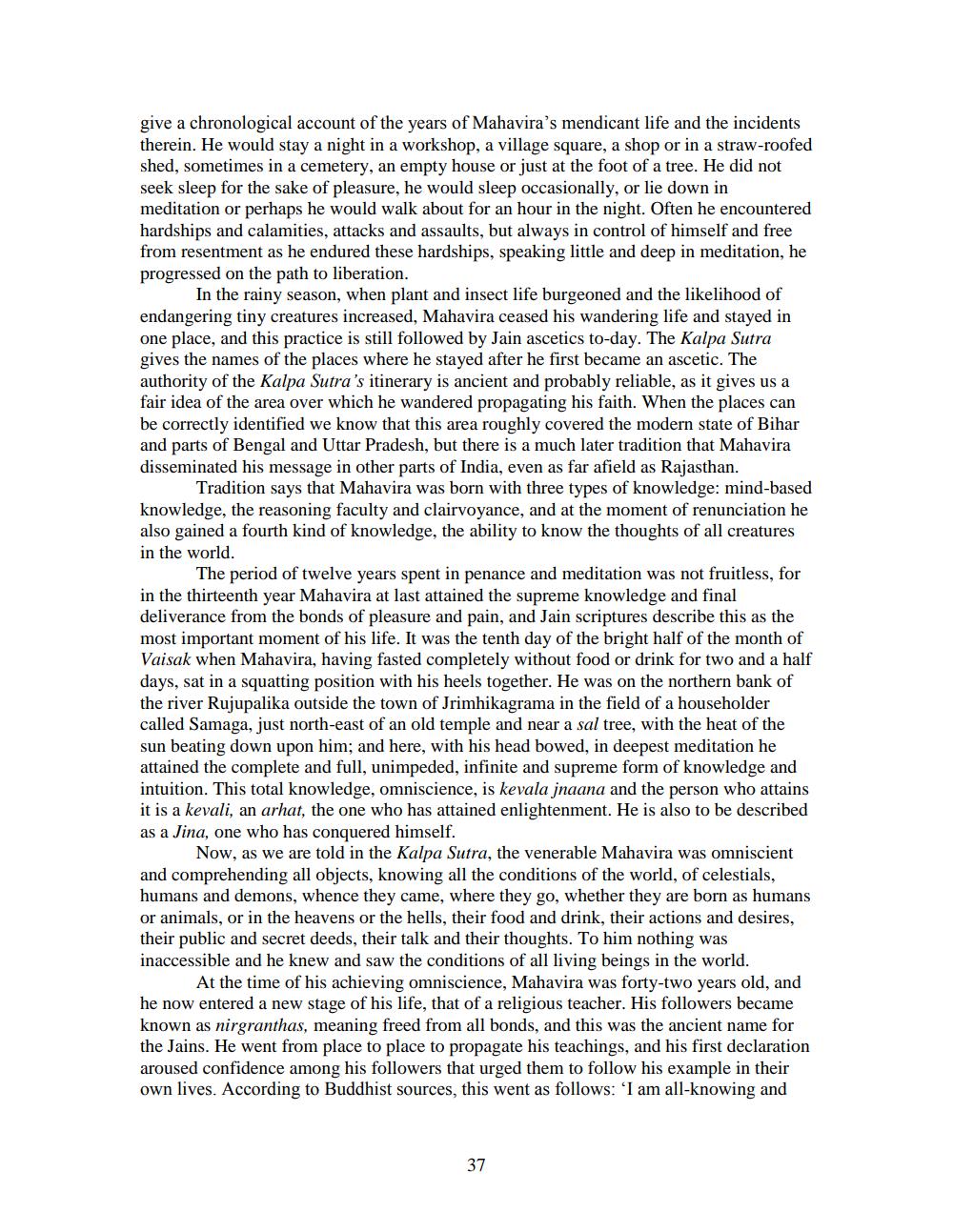________________
give a chronological account of the years of Mahavira's mendicant life and the incidents therein. He would stay a night in a workshop, a village square, a shop or in a straw-roofed shed, sometimes in a cemetery, an empty house or just at the foot of a tree. He did not seek sleep for the sake of pleasure, he would sleep occasionally, or lie down in meditation or perhaps he would walk about for an hour in the night. Often he encountered hardships and calamities, attacks and assaults, but always in control of himself and free from resentment as he endured these hardships, speaking little and deep in meditation, he progressed on the path to liberation.
In the rainy season, when plant and insect life burgeoned and the likelihood of endangering tiny creatures increased, Mahavira ceased his wandering life and stayed in one place, and this practice is still followed by Jain ascetics to-day. The Kalpa Sutra gives the names of the places where he stayed after he first became an ascetic. The authority of the Kalpa Sutra's itinerary is ancient and probably reliable, as it gives us a fair idea of the area over which he wandered propagating his faith. When the places can be correctly identified we know that this area roughly covered the modern state of Bihar and parts of Bengal and Uttar Pradesh, but there is a much later tradition that Mahavira disseminated his message in other parts of India, even as far afield as Rajasthan.
Tradition says that Mahavira was born with three types of knowledge: mind-based knowledge, the reasoning faculty and clairvoyance, and at the moment of renunciation he also gained a fourth kind of knowledge, the ability to know the thoughts of all creatures in the world.
The period of twelve years spent in penance and meditation was not fruitless, for in the thirteenth year Mahavira at last attained the supreme knowledge and final deliverance from the bonds of pleasure and pain, and Jain scriptures describe this as the most important moment of his life. It was the tenth day of the bright half of the month of Vaisak when Mahavira, having fasted completely without food or drink for two and a half days, sat in a squatting position with his heels together. He was on the northern bank of the river Rujupalika outside the town of Jrimhikagrama in the field of a householder called Samaga, just north-east of an old temple and near a sal tree, with the heat of the sun beating down upon him; and here, with his head bowed, in deepest meditation he attained the complete and full, unimpeded, infinite and supreme form of knowledge and intuition. This total knowledge, omniscience, is kevala jnaana and the person who attains it is a kevali, an arhat, the one who has attained enlightenment. He is also to be described as a Jina, one who has conquered himself.
Now, as we are told in the Kalpa Sutra, the venerable Mahavira was omniscient and comprehending all objects, knowing all the conditions of the world, of celestials, humans and demons, whence they came, where they go, whether they are born as humans or animals, or in the heavens or the hells, their food and drink, their actions and desires, their public and secret deeds, their talk and their thoughts. To him nothing was inaccessible and he knew and saw the conditions of all living beings in the world.
At the time of his achieving omniscience, Mahavira was forty-two years old, and he now entered a new stage of his life, that of a religious teacher. His followers became known as nirgranthas, meaning freed from all bonds, and this was the ancient name for the Jains. He went from place to place to propagate his teachings, and his first declaration aroused confidence among his followers that urged them to follow his example in their own lives. According to Buddhist sources, this went as follows: 'I am all-knowing and
37




